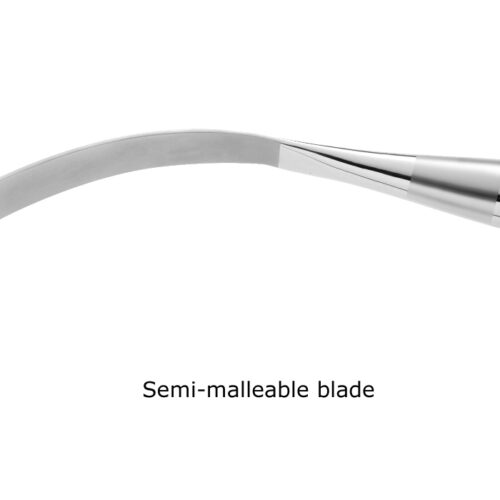Surgical Retractors Types
Surgical Retractors Types
Blog Article
Surgical retractors are essential instruments in the operating room. They serve a critical function by holding back tissues, organs, or muscles during surgery, allowing the surgeon to have better access and visibility of the area being operated on. Retractors are an indispensable tool in surgeries ranging from minor outpatient procedures to complex, invasive surgeries. With the wide variety of surgical retractors available, choosing the correct type based on the procedure being performed is crucial to ensure successful outcomes.

Types of Surgical Retractors
There are numerous types of surgical retractors, each designed for specific functions and surgical procedures. The most commonly used types are classified based on their functionality, shape, and how they are operated.
1. Hand-Held Retractors
Hand-held retractors are simple instruments manually operated by the surgical team. They come in various shapes and sizes depending on the specific anatomical structure they are intended to hold. These retractors are ideal for procedures requiring precise control and minimal force application.
Some common hand-held retractors include:
- Senn Retractor: Often used in smaller incisions and superficial surgeries, the Senn retractor features one blunt end and one end with three prongs. It's versatile and is frequently used in plastic surgeries.
- Army-Navy Retractor: This retractor is a double-ended instrument commonly used in abdominal surgeries. It is a straightforward tool for retracting tissue in deeper areas.
- Richardson Retractor: Richardson retractors are typically used in abdominal surgeries. Their curved blade design helps retract large areas of tissue effectively.
2. Self-Retaining Retractors
Self-retaining retractors are equipped with a locking mechanism that allows them to stay in place without the need for a human hand to hold them. This is particularly beneficial in surgeries that require a stable and prolonged exposure of an area.
Some common self-retaining retractors include:
- Weitlaner Retractor: Used in orthopedic and spinal surgeries, the Weitlaner retractor features blades with pointed prongs and a ratchet mechanism to hold it open.
- Balfour Retractor: A Balfour retractor is commonly used in abdominal surgeries, featuring adjustable blades that allow the surgeon to increase or decrease the retracted area.
- Gelpi Retractor: This is another self-retaining retractor used mainly in orthopedic procedures. It has sharp, pointed prongs that hold back tissues, giving the surgeon a stable view of the surgical area.
3. Ring Retractors
Ring retractors are designed with circular or oval-shaped frames, often used in surgeries involving large open cavities, such as abdominal or pelvic surgeries. These retractors can accommodate multiple retractor blades simultaneously, providing comprehensive exposure to the surgical field.
One widely used ring retractor is the Omni-Tract Retractor, which is often employed in open abdominal surgeries for retracting soft tissue and creating better exposure for the surgical team.
4. Specialized Retractors
Specialized retractors are designed for specific procedures or anatomical areas. These retractors ensure that surgeons can work with precision and safety in challenging environments.
Examples include:
- Rib Spreaders (Finochietto Retractor): Primarily used in thoracic surgery, rib spreaders are designed to separate the ribs, giving surgeons access to the heart, lungs, or esophagus.
- Cerebellar Retractor: Used in neurosurgery, this retractor allows precise retraction of brain tissue for safe and effective access to deeper areas of the brain.
- Malleable Retractor: These retractors are bendable and can be shaped to conform to the specific anatomical area, making them ideal for surgeries with irregular-shaped cavities.
Choosing the Right Retractor
Choosing the correct surgical retractor depends on several factors, including the type of surgery, the tissue or organ involved, and the need for precision or stability. Hand-held retractors provide greater control but require constant manipulation, while self-retaining retractors offer a more hands-free option, allowing the surgeon to focus on the procedure without needing assistance for tissue retraction.
Conclusion
Surgical retractors are vital in providing the visibility and access surgeons need to perform procedures safely and effectively. Whether it's a hand-held, self-retaining, or specialized retractor, each type plays an important role in different types of surgeries. By understanding the different types of retractors and their uses, surgeons can ensure they select the best tool for the job, enhancing surgical outcomes and patient care. Report this page